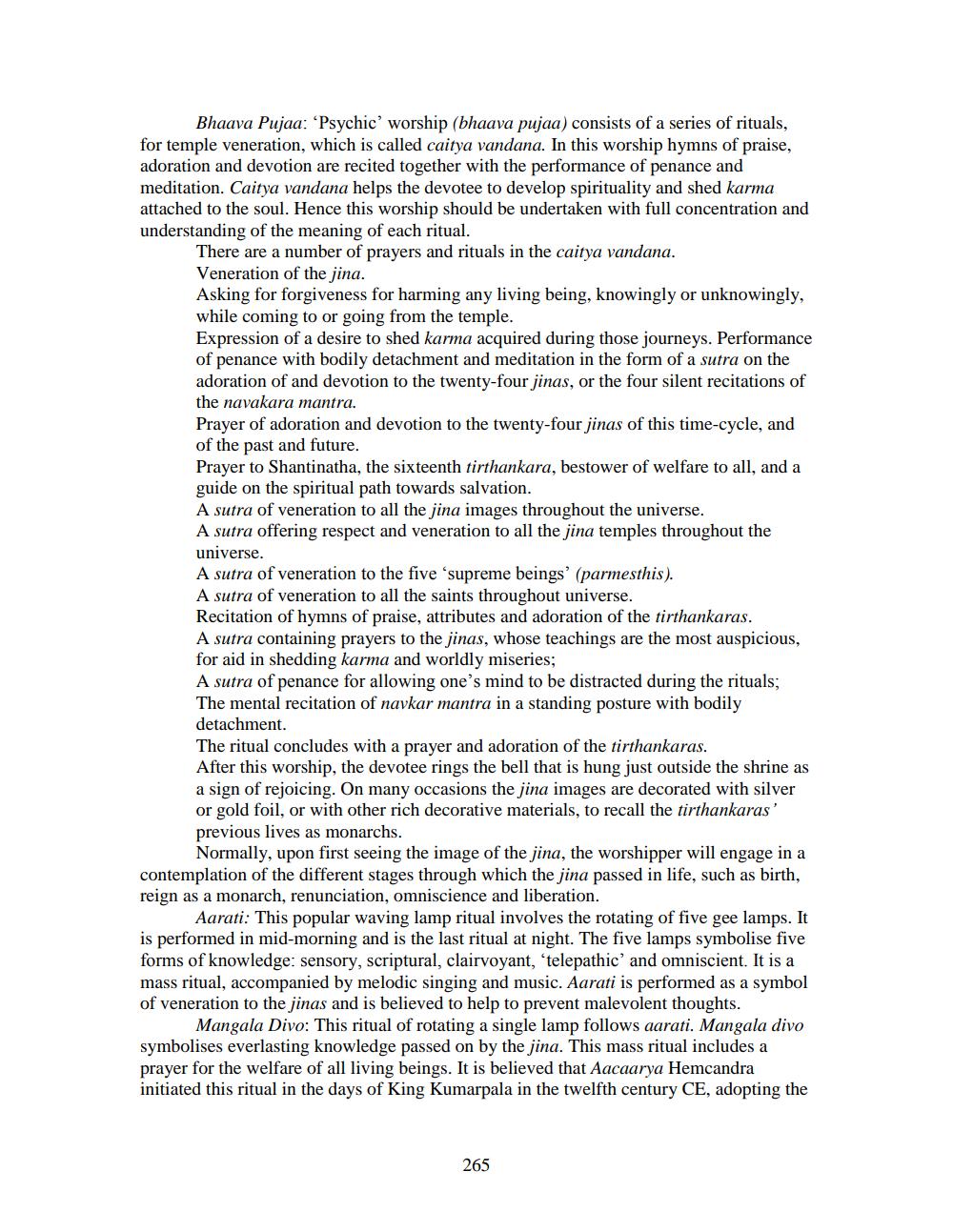________________
Bhaava Pujaa: 'Psychic' worship (bhaava pujaa) consists of a series of rituals, for temple veneration, which is called caitya vandana. In this worship hymns of praise, adoration and devotion are recited together with the performance of penance and meditation. Caitya vandana helps the devotee to develop spirituality and shed karma attached to the soul. Hence this worship should be undertaken with full concentration and understanding of the meaning of each ritual.
There are a number of prayers and rituals in the caitya vandana.
Veneration of the jina.
Asking for forgiveness for harming any living being, knowingly or unknowingly, while coming to or going from the temple.
Expression of a desire to shed karma acquired during those journeys. Performance of penance with bodily detachment and meditation in the form of a sutra on the adoration of and devotion to the twenty-four jinas, or the four silent recitations of the navakara mantra.
Prayer of adoration and devotion to the twenty-four jinas of this time-cycle, and of the past and future.
Prayer to Shantinatha, the sixteenth tirthankara, bestower of welfare to all, and a guide on the spiritual path towards salvation.
A sutra of veneration to all the jina images throughout the universe.
A sutra offering respect and veneration to all the jina temples throughout the universe.
A sutra of veneration to the five 'supreme beings' (parmesthis).
A sutra of veneration to all the saints throughout universe. Recitation of hymns of praise, attributes and adoration of the tirthankaras. A sutra containing prayers to the jinas, whose teachings are the most auspicious, for aid in shedding karma and worldly miseries;
A sutra of penance for allowing one's mind to be distracted during the rituals; The mental recitation of navkar mantra in a standing posture with bodily detachment.
The ritual concludes with a prayer and adoration of the tirthankaras.
After this worship, the devotee rings the bell that is hung just outside the shrine as a sign of rejoicing. On many occasions the jina images are decorated with silver or gold foil, or with other rich decorative materials, to recall the tirthankaras' previous lives as monarchs.
Normally, upon first seeing the image of the jina, the worshipper will engage in a contemplation of the different stages through which the jina passed in life, such as birth, reign as a monarch, renunciation, omniscience and liberation.
Aarati: This popular waving lamp ritual involves the rotating of five gee lamps. It is performed in mid-morning and is the last ritual at night. The five lamps symbolise five forms of knowledge: sensory, scriptural, clairvoyant, 'telepathic' and omniscient. It is a mass ritual, accompanied by melodic singing and music. Aarati is performed as a symbol of veneration to the jinas and is believed to help to prevent malevolent thoughts.
Mangala Divo: This ritual of rotating a single lamp follows aarati. Mangala divo symbolises everlasting knowledge passed on by the jina. This mass ritual includes a prayer for the welfare of all living beings. It is believed that Aacaarya Hemcandra initiated this ritual in the days of King Kumarpala in the twelfth century CE, adopting the
265




